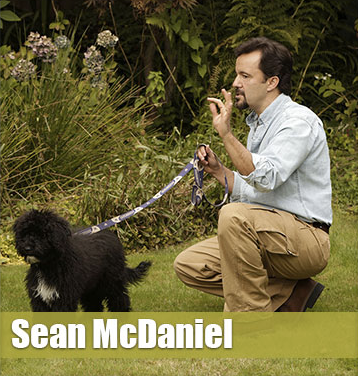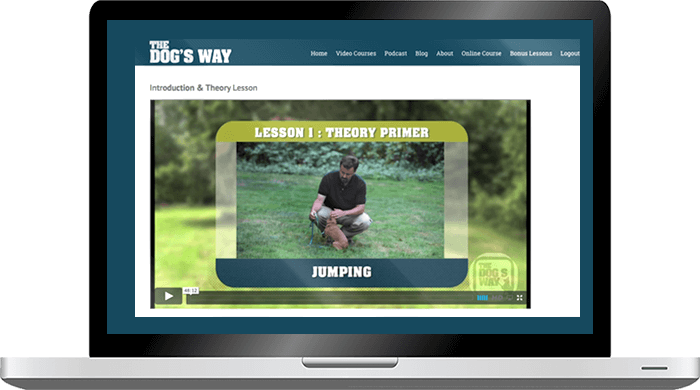test

SLEEPING
- Use a crate for sleeping. – A crate mimics a den and can make a dog feel more secure once they get used to it. The crate should be sized to your pup (not too large). Use a towel over the crate to minimize noise and keep the crate next to your bed for the first few nights. I have clients that always spend the first few nights “camping” with their new pup. That is, rolling out a sleeping bag on the floor and sleeping with
 their fingers in the crate door to allow physical reassurance to the pup that you’re right there. I can almost hear one of the old German dog trainers that I trained with saying, “Oh, don’t spoil the dog that way – you’ll ruin him for life”. Still, if a pup is whiny about a crate at night, we’ve seen great results with this technique as a temporary strategy as a pup transitions from having lots of physical contact while sleeping with mom and siblings to learning to be a little more separate.
their fingers in the crate door to allow physical reassurance to the pup that you’re right there. I can almost hear one of the old German dog trainers that I trained with saying, “Oh, don’t spoil the dog that way – you’ll ruin him for life”. Still, if a pup is whiny about a crate at night, we’ve seen great results with this technique as a temporary strategy as a pup transitions from having lots of physical contact while sleeping with mom and siblings to learning to be a little more separate.
CRATE TIP: If you’re reading this prior to bringing your puppy home, ask your breeder to spend a few minutes each day with your pup, in weeks 6-7, to start the conditioning process to a crate.
- You may get up a couple of times a night that first week. Your pup won’t have very established bladder or bowel control for the first 2-3 weeks. You may be taking him outside 8-12 times per day to relieve themselves and, likely two of those times will be between 4 & 6 o’clock in the morning. (don’t worry – this doesn’t last long)
- Ask your breeder for a towel or something with the scent of your pup’s litter mates on it. Keep this in the crate for the first couple weeks. Additionally, you can sleep with a towel in your bed for a night (an older towel is recommended as you’ll likely not be putting this towel back into the linen closet after it’s been on puppy assignment) and then place that over the bed or pad you have in the crate for your pup. Dogs identify places and pack-mates largely by scent, so this can help your pup feel more comfortable in the crate as well.
- Don’t have your pup sleep with you in your bed. – This usually doesn’t work out well in the long run and it’s best to start with good habits up front.
FEEDING (between 8-12 weeks the frequency is usually 3 times a day)
FOOD
Each time you feed your new puppy they will likely become really excited. (Warning: if your pup isn’t showing any interest in food in the first 24-36 hours call your vet immediately). Start creating the association from your first feeding that as soon as your pup ‘settles down’ the food shows up. Hold the prepared food bowl above your pup’s head and say “sit” … then wait … and say “sit” again … and repeat this several times until the pup’s little behind lands on the floor (even for a second) then immediately place the food bowl down and say. “go ahead!” Many people are unsure of whether an 8 week old puppy can learn “sit”. Most can. I wouldn’t worry about it too much right now though. The goal is to create an association with your pup between getting food from you and being attentive and calm. The proficiency of the sit behavior will come later, but if you can start conditioning it now – why not?FEEDING/CRATE TIP: If you”re having to work at getting your pup to like their crate, always feed puppy in their crate.
NOTE: Please don’t ”free feed”. That is, keep food out all the time. Beginning a schedule and a specific association between your ‘help and assistance’ and feeding is crucial right now.
WATER
Having water out freely is usually OK. Some pups that have a harder time controlling their bladder may need a more scheduled access to water. Even if your pup seems to handle free water fine though, you may still want to take it away an hour and a half before bedtime to assist in their ability to make it longer through the night.
JUMPING, MOUTHING AND BITING
Jumping and Climbing on You
Many trainers will tell you to treat a puppy like an adult dog. “If you’re not going to like them jumping on you when they weigh 70 pounds don’t let them do it when they’re a puppy”. Well … sort of true. I follow that line of thinking once a pup begins to mature a bit. However, in the first couple weeks I want to create as much relaxed and easy bonding time as I can. This includes some jumping, climbing and crawling up on you. Be sure to have lots of physical contact between family members and your new pup. (Warning: pups sometimes play with other pups by biting their faces – don’t allow a child’s face too near sharp little puppy teeth)
Telling Your Pup NO!
There aren’t a lot of BIG – “NO’s” in the first couple weeks either by the way. You ought to have a puppy area that you’ve puppy proofed and you should be restricting your puppy’s access to this “puppy area”. New pups certainly don’t get a free run of the house. In other words, create an area in which you won’t being hollering at your puppy for doing the wrong thing frequently. If they begin to nibble on you or play bite, say NO calmly but firmly and then put a chew toy in their mouth. The protocol for stopping a puppy from inappropriate use of teeth on you or anything else in this first couple weeks is simply distract them from the inappropriate object and redirect them towards what they’re allowed to chew.
PLAY TIME AND SUPERVISED INSIDE TIME
The first two rules regarding inside time for puppies are: 1) Inside time is always supervised and 2) Inside time is always supervised. No that’s not a typo. The cardinal rule of house breaking (teaching a pup to go to the bathroom outside or in whatever particular place you’ve set up for that) is ‘no unsupervised time inside’. There are two other rules to add to this. The first is: inside ‘supervised’ time only comes after bathroom trips outside, and the second rule, puppy never gets a full run of your house. Investing in a couple of pet gates to block off a smaller, ‘puppy proofed’, section of your house will pay dividends in the long run. Ideally, this small section will be adjacent to the door that you’re going to take them out to go to the bathroom. (If you need more advice on house breaking and a sample schedule of how to use a crate to manage that, you can also read our post on housebreaking 101)
COLLARS AND LEASHES
Your pup will likely be used to a collar when they arrive, but leashes may be completely new. For pups between 8-10 weeks old I like using retractable leashes. They keep the leash out from under their feet and are easy to manage with scampering, exploring little pups. By way of previewing future work though, we will begin to move away from those retractable leashes fairly quickly in training puppies so they can start having a more free experience of walking with you on a loose leash. This transition from retractable leash to regular leash, takes place somewhere in the 10-12 week stage.
WALKING AND EXERCISE (8-10 weeks)
Exercise ”per se” really isn’t an issue with a young pup. I’d recommend you think of it more as exploratory expeditions. Give your pup a lot of chances to use their nose in new places (though not around areas that other dogs frequent) and give them a couple walks around the block or outings to some place new each day. Your puppy won’t be allowed to be around other dogs in the first few weeks until they have received many of their vaccinations. This means no pet stores, dog parks, or training classes in the first few weeks. Do take your pup out to see many different things though. Definitely have your pup meet several new people a day. Some trainers recommend your pup meets 100 new people by the age of 12 weeks (that’s about 3-4 people a day by the way). It”s a good goal to have but your pup won’t be ruined if you only get to 83. The point is to get your puppy consistently comfortable on a daily basis with meeting new people.
Hopefully, that gives you a few ideas to make the first few weeks less stressful on your family and your new puppy. If there are questions that you”d still like answers to, feel free to ask questions in the comments and I”ll address it in a subsequent post.
By the way, some other articles on my blog that you might find applicable to your puppy research are:
House Breaking 101: The first few weeks
House Breaking 201: teaching your pup to “ask” to go outside

About the Author: Sean
I’ve been training people and dogs in Seattle for the last decade and a half. My main focus when working with clients every week in one-on-one, private lessons is to help people learn to get their dogs to a functional level so that they can actually enjoy spending time every day with their dog instead of stressing about their dog’s behavior issues.
Affiliate Program
Make money by referring people to the video course!
. . . . .

About Sean
I’ve been training people and dogs in Seattle for the last decade and a half. My main focus when working with clients every week in one-on-one, private lessons is to help people learn to get their dogs to a functional level so that they can actually enjoy spending time every day with their dog instead of stressing about their dog’s behavior issues.
Ask Sean a question!
If we use your question in the show, Sean will send you a coupon code for free access to the online video course!
If you have a question you’d like me to respond to on the show (and you want to hear yourself on a future episode) leave me a voice mail! 1 (844) 364-7929 or email me here.

